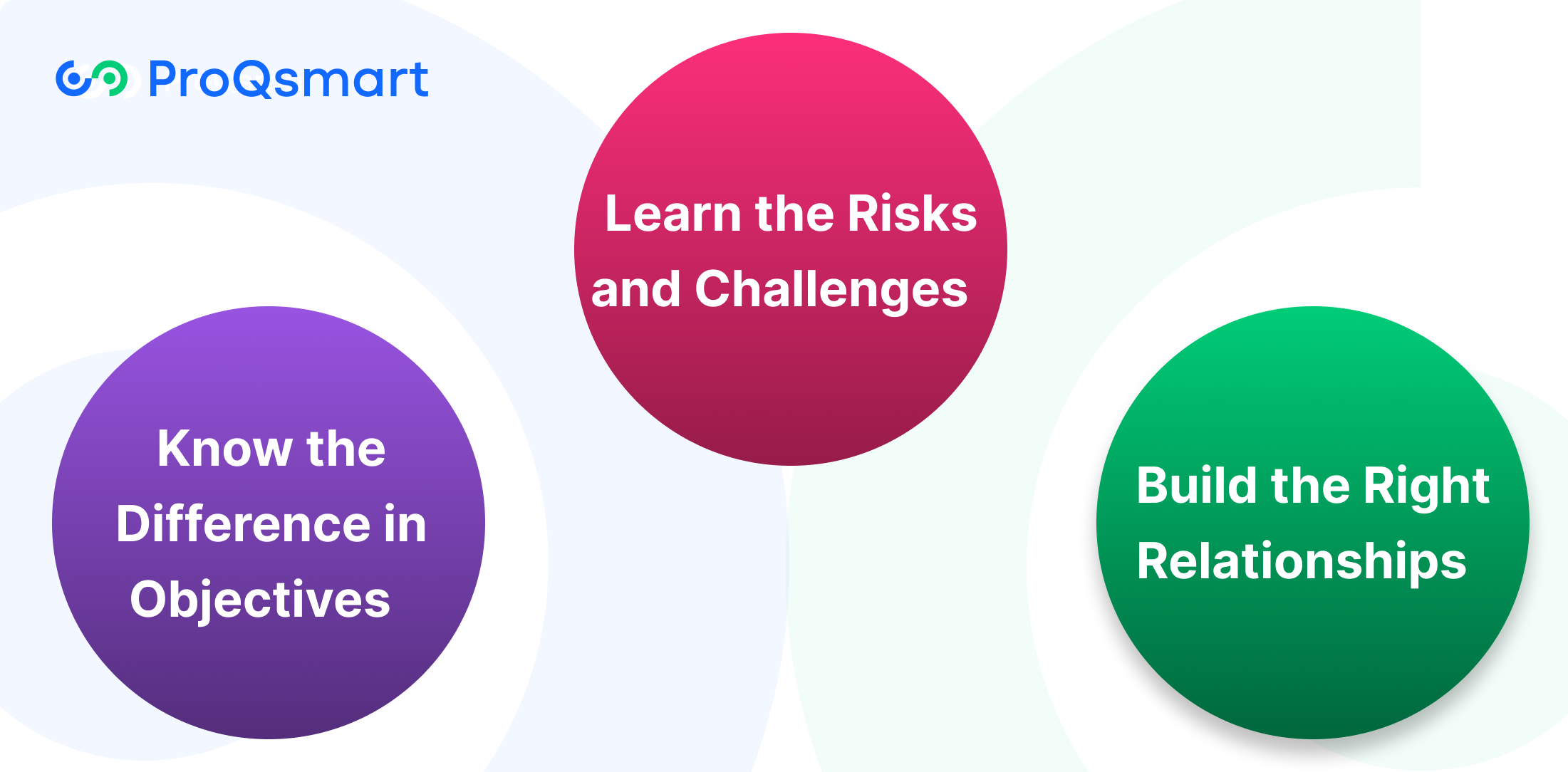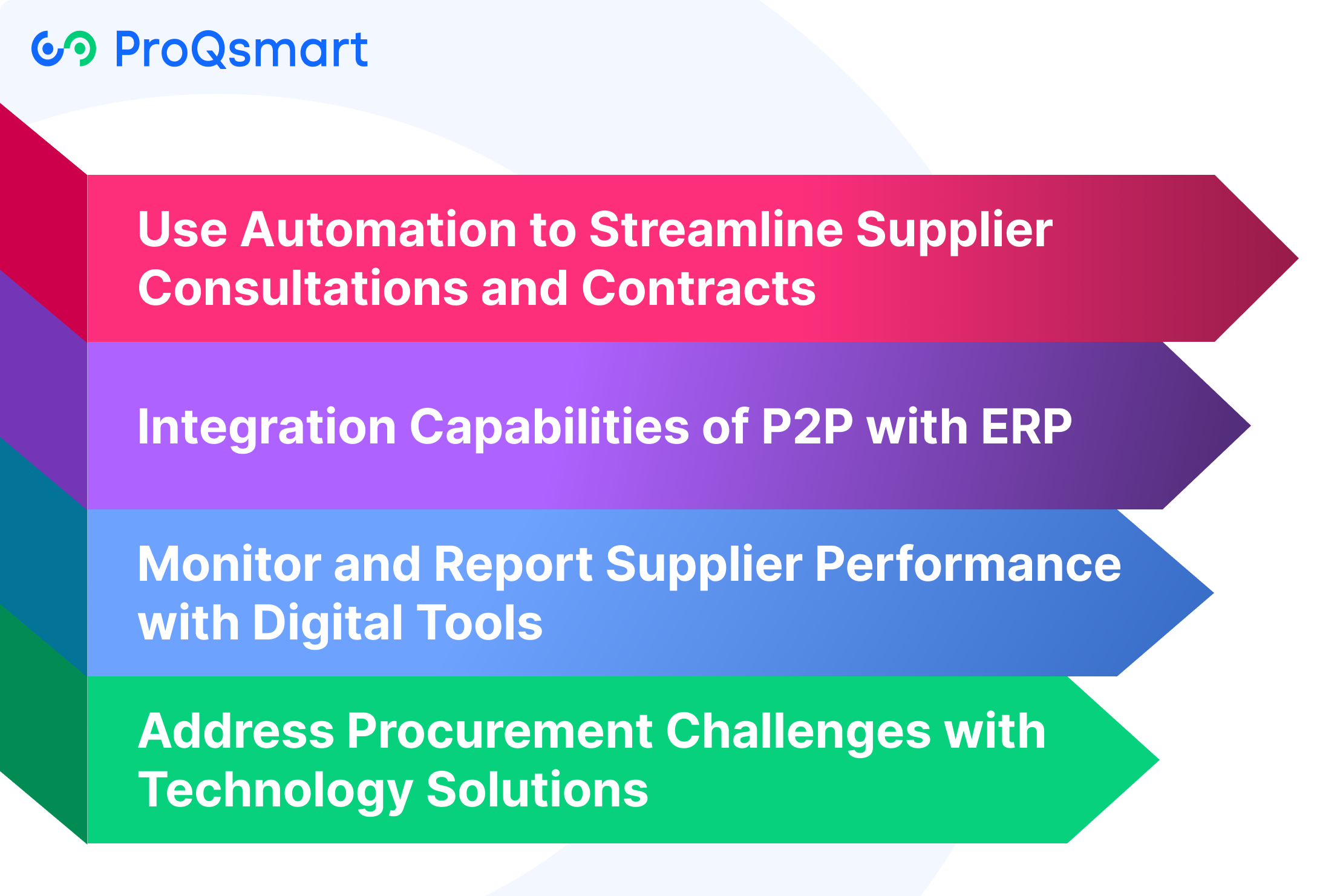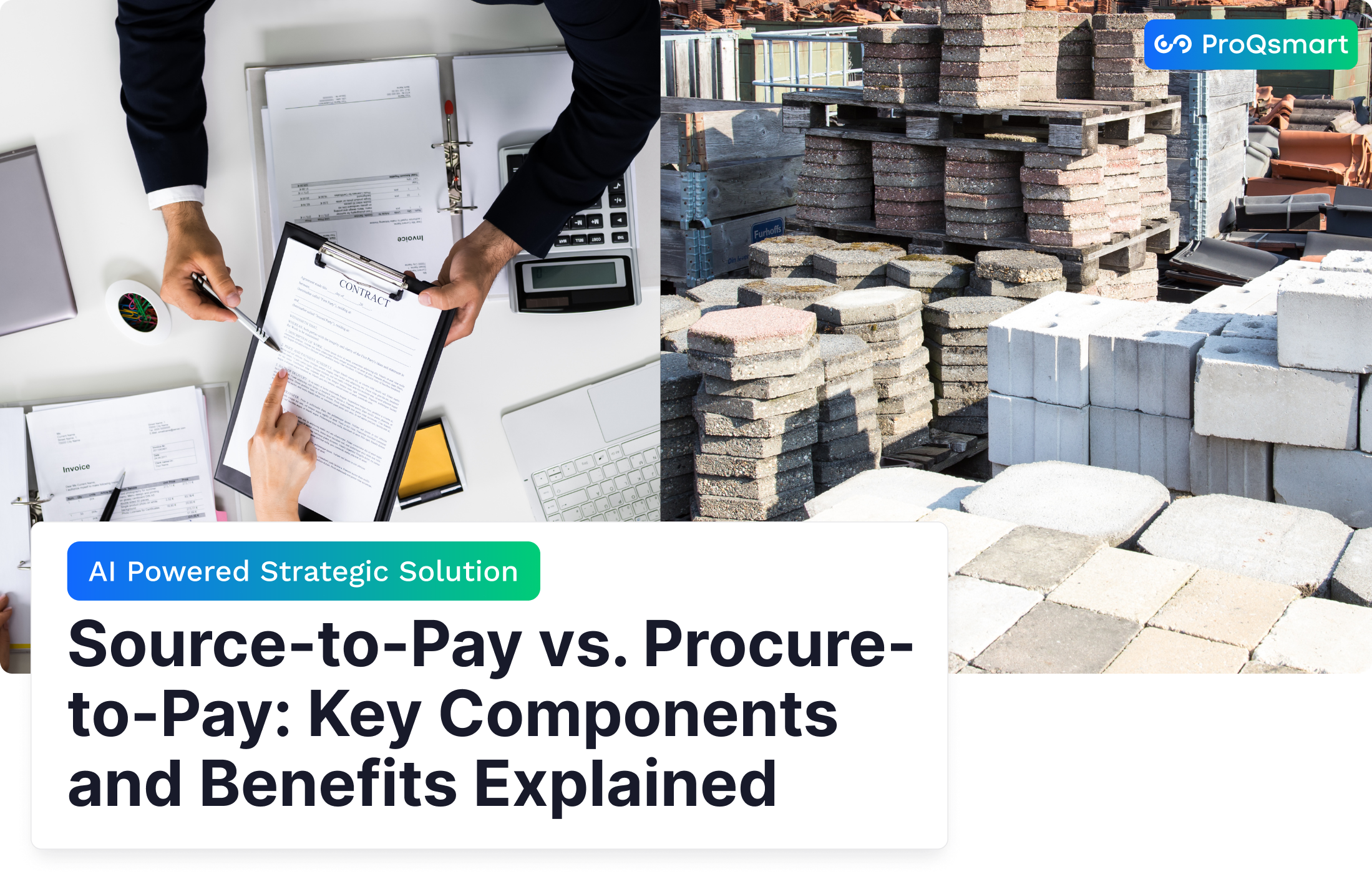Both source to pay and procure to pay solutions enable companies to build more intelligent supply chains. Yet, each process has different, unique steps and tools. Indeed, most teams have to choose between them based on their business objectives, available budget, and technology infrastructure.
The right choice can result in obvious cost savings, more favorable agreements with suppliers, and increased compliance and reduced risk. After that, learn how each approach operates and what sets them apart.
Next, focus on the important criteria when selecting a custom configuration.
What is Procure to Pay (P2P)?
Procure-to-Pay, or P2P, connects an organization’s procurement process to their payment processes. The process starts with a requisition. From there it moves into generating a purchase order, receiving that order, and eventually paying for the goods or service upon receipt.
Every step is carefully lined up with the previous one, so not even a penny goes missing.
Approvals and checks
Approvals and other review and checking functions are important and prevalent, appearing when teams must approve transactions before funds are transferred. P2P offers the most value for companies making a large number of purchases.
Further, it increases accountability and lessens the chance for human error through technology by allowing the agency to track each order. Today, nearly 80% of teams rely on digital tools to assist them with P2P.
What is Source to Pay (S2P)?
The source-to-pay (S2P) process encompasses all of the steps necessary to meet your team’s requirements. You determine what’s needed, choose the appropriate vendors, negotiate agreements, and pay those vendors.
Teams labor through market study, vendor checks, and price talks before onboarding new vendors. S2P brings all these activities under one seamless process, connecting high-level strategies with everyday work.
It’s not only about buying things. This method and solution gives teams the ability to take a strategic approach to market, source, evaluate, and manage an entire supplier relationship from start to finish.
Supported by S2P tools, teams are able to leverage data to identify non-compliant behaviors, spend more efficiently, and ensure healthy relationships with suppliers. This process works best for organizations managing diverse procurement needs and dynamic transactions.
Source to Pay vs Procure to Pay: The Core Differences

As we dig deeper into procurement, Source-to-Pay (S2P) and Procure-to-Pay (P2P) are terms that frequently arise. Both are important in custom manufacturing, but they are not interchangeable. S2P spans the entire lifecycle, from sourcing new suppliers to paying invoices. P2P only refers to the order-to-payment process exclusively.
Most organizations leverage these models to increase efficiency, reduce expenses, and control risk. Seeing S2P and P2P side-by-side in more detail allows teams to better choose the right configuration for their situation.
|
Feature |
Source-to-Pay (S2P) |
Procure-to-Pay (P2P) |
|
Scope |
End-to-end (sourcing to payment) |
Transactional (order to pay) |
|
Key Focus |
Strategic sourcing, supplier relations |
Process automation, efficiency |
|
Supplier Management |
Deep evaluation, long-term partners |
Basic vetting, order execution |
|
Data Insights |
Holistic, lifecycle-wide |
Transaction-level |
|
Common Benefits |
Better supplier choice, risk control |
Faster processing, cost savings |
|
Automation Use |
Sourcing, contracts, payments |
Approvals, invoicing |
Know the Difference in Objectives
While S2P generally aims to establish more strategic supplier relationships and enhance market understanding. It balances supplier capability, conducts market research, and seeks more than the lowest price.
P2P continues to emphasize fast order processing, payment, and spend visibility. Teams use P2P to cut wait times and errors by automating tasks. Most US firms now use some automation to speed things up.
Learn the Risks and Challenges
S2P requires stringent supplier verification and effective contract management expertise because errors in this process can affect the company’s bottom line for years to come. Whether that’s selecting a suboptimal supplier based off of bad data or leaving significant savings on the table from processes being skipped.
With P2P, the most considerable risks are late or missed payments that can lead to tense supplier relationships and negative effects on cash flow. Both require access to real-time data in order to identify issues quickly and act on them more effectively.
Build the Right Relationships
S2P focuses on strategic, long-term outcomes. Imagine enduring partnerships and mutual benefits with vendors. As an example, a climate technology company could utilize S2P to secure sources of rare materials upfront so that such projects don’t have to miss deadlines in securing them.
P2P does great on operational day-to-day stuff. It’s what keeps the world’s largest manufacturer of bolts and chips to ensure each one arrives right on time and gets paid for seamlessly.
Strategic Benefits: Source to Pay vs Procure to Pay Impact

In custom manufacturing, adopting source to pay (S2P) vs procure to pay (P2P) dramatically affects your workflows. This single decision drives the entire value chain. S2P includes each stage from supplier discovery through procurement, contracting, and payment.
P2P begins with the creation of a purchase order and tracks the full procurement transaction to payment. Both have been critical in increasing transparency, driving efficiency, and saving taxpayer dollars across the federal government. Each offers unique benefits and serves varied purposes across the manufacturing and tech-forward sectors.
Build Vendor Relationships and Achieve Cost Savings
S2P allows teams to look past basic purchasing in order to emphasize identifying the best suppliers from the outset. This process involves multiple layers of market checks, contract reviews, and continual supplier checks. By investing the time to thoroughly vet and develop trust, organizations provide the groundwork for stable, long-term contracts and consistent pricing.
An IT or EV company can apply S2P to meet developing industry standards. Through collaboration with the right organizations, they could be better positioned to withstand some of these shifts. About 80% of procurement teams today are turning to S2P to realize these improvements.
Enhance Efficiency and Reduce Errors with P2P
P2P is least suited to areas where timely, accurate payment is of the highest concern. Equipping teams with order, bill, and payment tools eliminate those manual processes and reduce error. With real-time, integrated systems, managers have the ability to quickly identify errors and take corrective action, helping ensure spend remains within budget.
In production contexts, especially large-scale industrial runs, this leads to more efficient operations and less expedited shipping or invoice scrambling.
Improve Supply Chain and Procurement Outcomes
S2P encourages stronger connections throughout the supply chain, with verifications at every level. Tight controls, risk spotting and increased savings. Clear rules and real-time data provide much tighter controls on spending.
ProQsmart’s AI-driven platform is ideally suited here, as it integrates the bidding, supplier verification, spend monitoring and compliance. Teams that adopt S2P experience improved compliance, increased accountability, and greater visibility into procurement processes, giving them the ability to see their complete story.
Drive Supplier Collaboration with Strategic Sourcing
When sourcing is integrated into the workflow, teams can identify potential suppliers more quickly and easily develop relationships with current suppliers. With S2P, it’s simple to establish objectives, provide comments and monitor transactions.
This powers consistent expansion and allows departments to pivot quickly when markets or specifications evolve.
Implementation: Challenges and Change Management
Maybe this is why on the rollout of S2P and P2P systems, teams often experience fierce resistance. Staff are understandably nervous about having new technology introduced and how it will affect their day-to-day workflow. Getting people to buy in and ensuring they’re trained on the new configuration goes a long way.
User training is the best way to ensure a smooth transition when adopting a new S2P tool. This tool takes significantly more time and hands-on effort than a simple P2P upgrade. A gradual implementation is ideal, allowing people to provide input as they acclimate to each element.
Regular updates from leadership that are open and frank ensure that everyone stays aligned and foster a level of trust.
Technology’s Role: Amplifying Differences

Digital tools significantly impact how organizations approach procurement strategies. Technology is not just a quick way to do things. It illustrates the great gulf that separates source to pay (S2P) from procure to pay (P2P). Each process is deeply influenced by these differences.
S2P consists of a few main steps. It begins with identifying suppliers and performing market research, then proceeds to creating contracts and monitoring supplier performance. P2P, in contrast, is more narrowly focused on buying and paying, which gives it less breadth but makes it a more streamlined solution.
Use Automation to Streamline Supplier Consultations and Contracts
Supplier discussions and contract activities are easier and faster with automation in S2P. Digital platforms cut out all of that manual work. This means less time spent on documentation and more time making sure they have deep, trusting relationships with their suppliers.
For example, automated contract management integrates supplier information, pricing comparisons, and contract details all in one location. This has the double benefit of reducing mistakes and speeding up review. ProQsmart provides companies with easily accessible documentation of all communications, giving business greater protection.
It helps ensure quicker access to contract information, allowing teams to accelerate processes while having greater oversight.
Integration Capabilities of P2P with ERP
What makes P2P technology especially unique is the depth of connectivity it can establish with ERP systems. These types of tools allow teams to streamline invoice processing, payments, and financial record management from a single solution.
Easy ERP integration ensures finance teams have a real-time view of enterprise spending so they can catch problems before they get out of hand. Invoice processing solutions—akin to accounts payable automation—seamlessly match purchase orders with goods receipts, reducing the chance of double paying or overlooking invoices.
Monitor and Report Supplier Performance with Digital Tools
Digital tools allow organizations to monitor supplier performance, with scorecards updated automatically and dashboards available in real time. Those advanced analytics show trends in down delivery times, quality and delivery costs.
This advantage enables teams to find the most vulnerable links and spotlight the strongest performers. ProQsmart’s supplier performance feature allows procurement teams to identify tangible outcomes by measuring contract requirements against actual supplier performance in real time.
Address Procurement Challenges with Technology Solutions
Both S2P and P2P face big hurdles, such as ensuring consumer protection or complying with regulation. Technology addresses all these requirements by leveraging real-time data, intelligent alerts, and easily accessible audit trails.
Often larger and more complex than E1 solutions, S2P platforms incorporate extensive enforcement measures and tailored processes. This works best for organizations that have a large number of suppliers or complex contracts.
For P2P, automated matching and payment tools ensure orders and invoices match up, reducing glitches and saving cash.
Measuring Success: ROI and Metrics
Companies frequently juxtapose source-to-pay (S2P) with procure-to-pay (P2P). They use clear KPIs to identify the better approach. Some key measures are cost savings, speed per step, and supplier goal achievement rates.
For S2P and P2P, teams study PO coverage. When that’s the case, they often discover that about 80% of that spend has no corresponding purchase order. They measure the difference between initial bid and final contract price right away, not to mention the value added by seamless day-to-day execution.
ROI is determined by calculating annual cost savings divided by annual cost of procurement. Good monitoring allows you to identify places where mistakes fall and processes move more quickly.
Teams leverage these realities to ensure the funnel process aligns with business objectives and continues improving.
Conclusion
Source to Pay and Procure to Pay both define the overall process that guides how your teams purchase, manage, and track everything they need. Both methods deliver distinct value.
Source to Pay goes beyond the surface of supplier selection and contract establishment. Source to Pay takes it a step further by focusing on buying and paying. Teams experience benefits in cost, speed, and control with both. With fewer resources, many firms are starting to rely more heavily on AI and intelligent technologies to accelerate every phase, identify issues and potential risks, and maintain continuity.
Selecting the correct procurement or sourcing route involves consideration of tangible market need, technology and capability. Teams that harmonize their workflow with major objectives witness major achievements. Want to learn more about streamlining source-to-pay? Discover the positive impact




